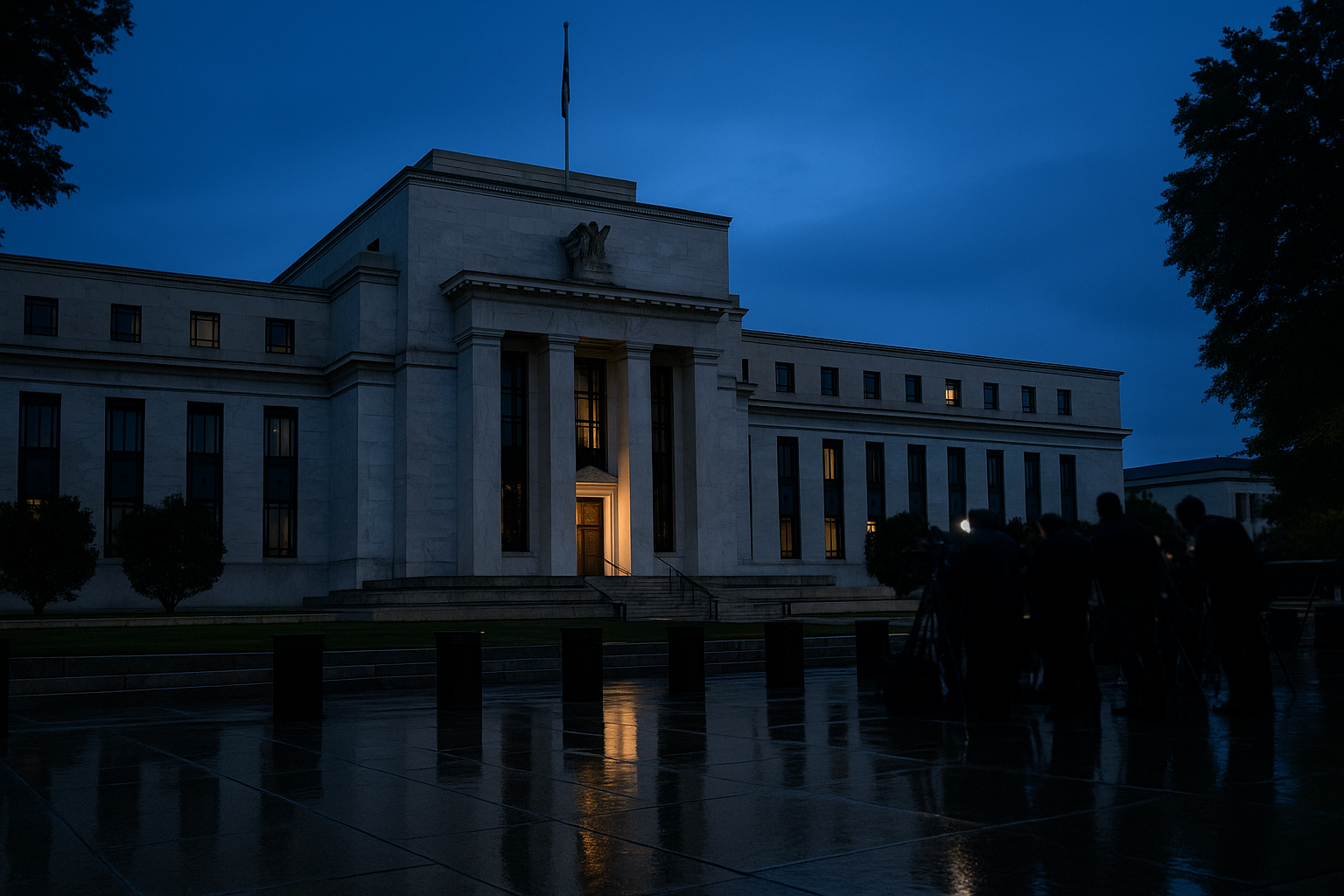Data Blackout or Not, Fed Set to Trim Rates Again
By Tredu.com • 10/29/2025
Tredu

Policy choice under a thinner evidence base
The Federal Reserve enters decision day with visibility reduced by a prolonged data blackout. Key releases on jobs, inflation, and spending have been delayed, leaving policymakers to rely on secondary sources and regional anecdotes. Yet the signal from markets and private trackers points in one direction. The committee is set to trim rates again by 25 basis points, taking the target range a step lower while acknowledging that the outlook is clouded. For Tredu readers, the headline sums it up: data blackout or not, the Fed is set to trim rates again.
What the committee is likely to deliver
A quarter-point reduction would move the policy rate closer to an eventual neutral setting, consistent with moderating inflation and a softer labor market. The statement will probably balance two messages. First, inflation has cooled toward 3 percent on trend, helped by steadier goods prices and easing shelter components. Second, growth is losing altitude as hiring slows and credit remains selective. A measured 25 bp step fits that mix, since it supports activity without signaling complacency on prices.
The data the Fed has, and the data it lacks
With the government’s main statistical pipeline partially offline, staff have leaned on weekly payroll snapshots, card-spend proxies, company guidance, and the Beige Book. Those sources track direction, not levels, and they carry composition bias. Private employment gauges suggest hiring is edging higher only modestly. Price trackers show disinflation continuing, but not collapsing. The lack of official verification argues for incremental policy moves, rather than bold shifts that could misjudge momentum.
Balance sheet runoff: toward an endgame
Funding desks are focused on a second strand of policy, the pace of balance sheet runoff. Liquidity conditions have stayed orderly, yet the combination of lower rates and ongoing runoff can tighten at the wrong moment. Officials may hint at a timeline to slow or stop quantitative tightening, possibly by adjusting monthly caps or reserving the right to pause if market plumbing strains. An endgame roadmap would lower volatility across bills, repo, and front-end spreads.
Labor: cooler hiring, sticky participation frictions
Pre-blackout readings showed unemployment drifting higher and job creation slowing from mid-year levels. Participation has improved from pandemic lows, but frictions remain in care, housing, and skills. Wage growth is decelerating in services that had run hot, consistent with businesses regaining price discipline. The committee will note that a softer labor tape creates downside risk to household demand into the holiday quarter, even if outright job losses remain limited.
Inflation: progress, with caveats
Headline and core inflation have eased toward 3 percent year on year. Shelter is cooling on a lag, while durable goods have seen disinflation as supply chains normalize. Services remain the swing factor. Tariff headlines, energy price swings, and one-off fees can still lift month-to-month prints. The Fed will stress that progress is real, yet incomplete, which argues for patience after today’s move and for close monitoring of inflation expectations.
Markets: pricing the cut, scanning the guidance
Rates futures have leaned toward a 25 bp cut for days, while the dollar and front-end yields trade in tight ranges. The more market-moving element is guidance. If the statement nods to a runoff endgame, equities sensitive to funding conditions could find support. If Chair Powell emphasizes discretion and data dependence, the curve may bull-steepen modestly as investors infer a slower cadence of cuts paired with a liquidity backstop.
Communication in a fog
The challenge is to explain a decision made with fewer hard numbers. Expect clear language that the committee is proceeding carefully, using the best available information, and ready to adjust as official data return. The phrase data blackout or not has become a practical test for the Fed’s reaction function: preserve flexibility, avoid over-committing, and keep inflation expectations anchored while supporting growth.
Risks around the base case
Three risks frame the debate. First, over-easing: cutting rates faster than disinflation warrants could reignite price pressure or fuel speculative pockets. Second, under-easing: holding back in the face of deteriorating hiring could slow activity more than intended. Third, liquidity risk: maintaining runoff too long as growth cools could sap reserves and tighten financial conditions even as policy rates fall. A careful pairing of a small cut with a path toward runoff adjustments is designed to manage these trade-offs.
International spillovers and the dollar
A gentler Fed stance softens global financial conditions, although currency effects depend on relative central bank paths. If peers move more slowly, the dollar can stay firm, limiting imported price relief. If global easing syncs up through year end, yield differentials narrow, which can ease the dollar’s grip on commodity prices and trade financing.
What to watch in the statement and press conference
Investors will scan for three items. One, explicit acknowledgement that the evidence base is thinner, with a pledge to reassess as official releases resume. Two, language that opens the door to a balance sheet runoff endgame, even if no date is set. Three, Powell’s framing of labor risks versus inflation risks, which will set odds on another 25 bp move before year end. Clarity here can stabilize expectations until the data flow normalizes.

How to Trade Like a Pro
Unlock the secrets of professional trading with our comprehensive guide. Discover proven strategies, risk management techniques, and market insights that will help you navigate the financial markets confidently and successfully.


